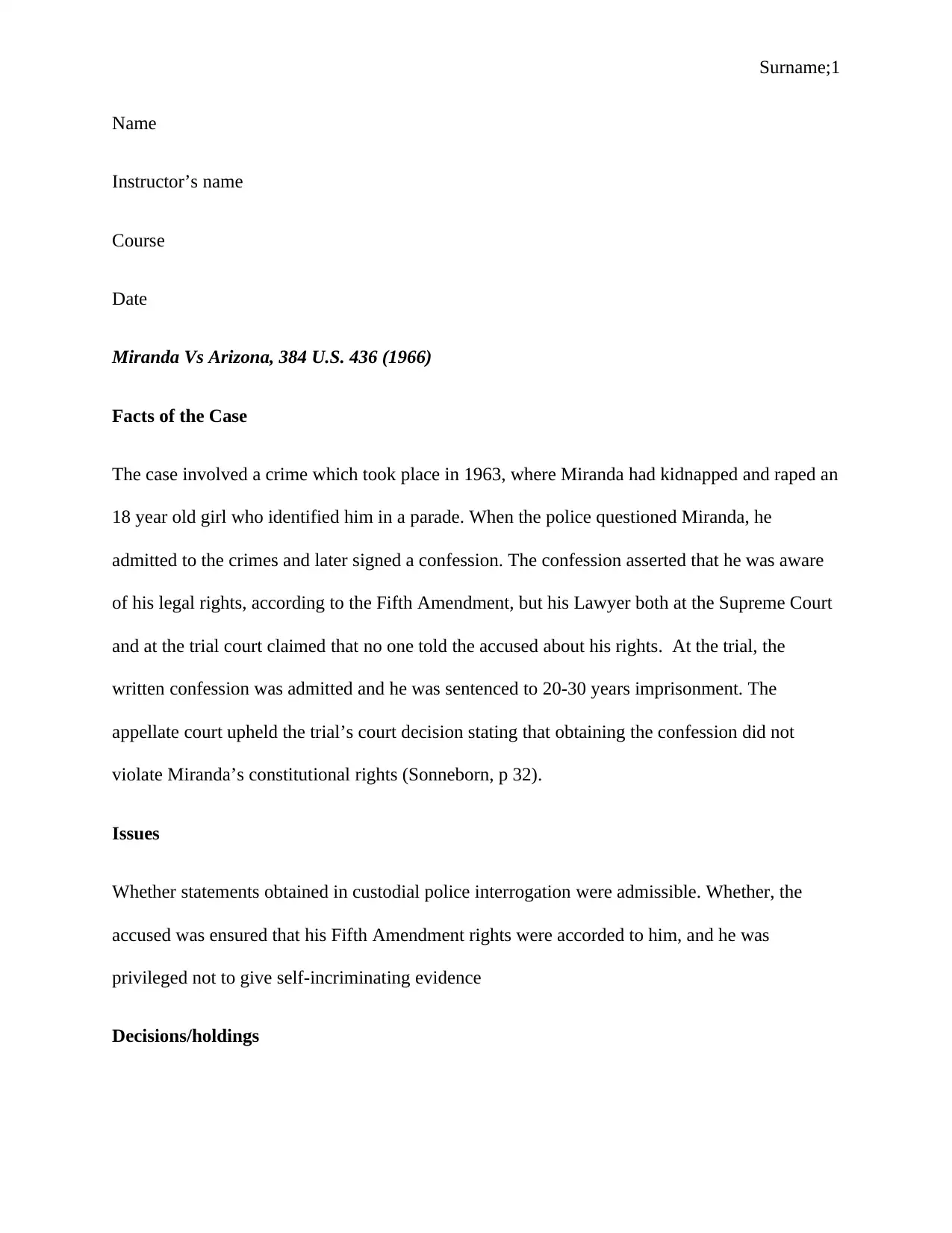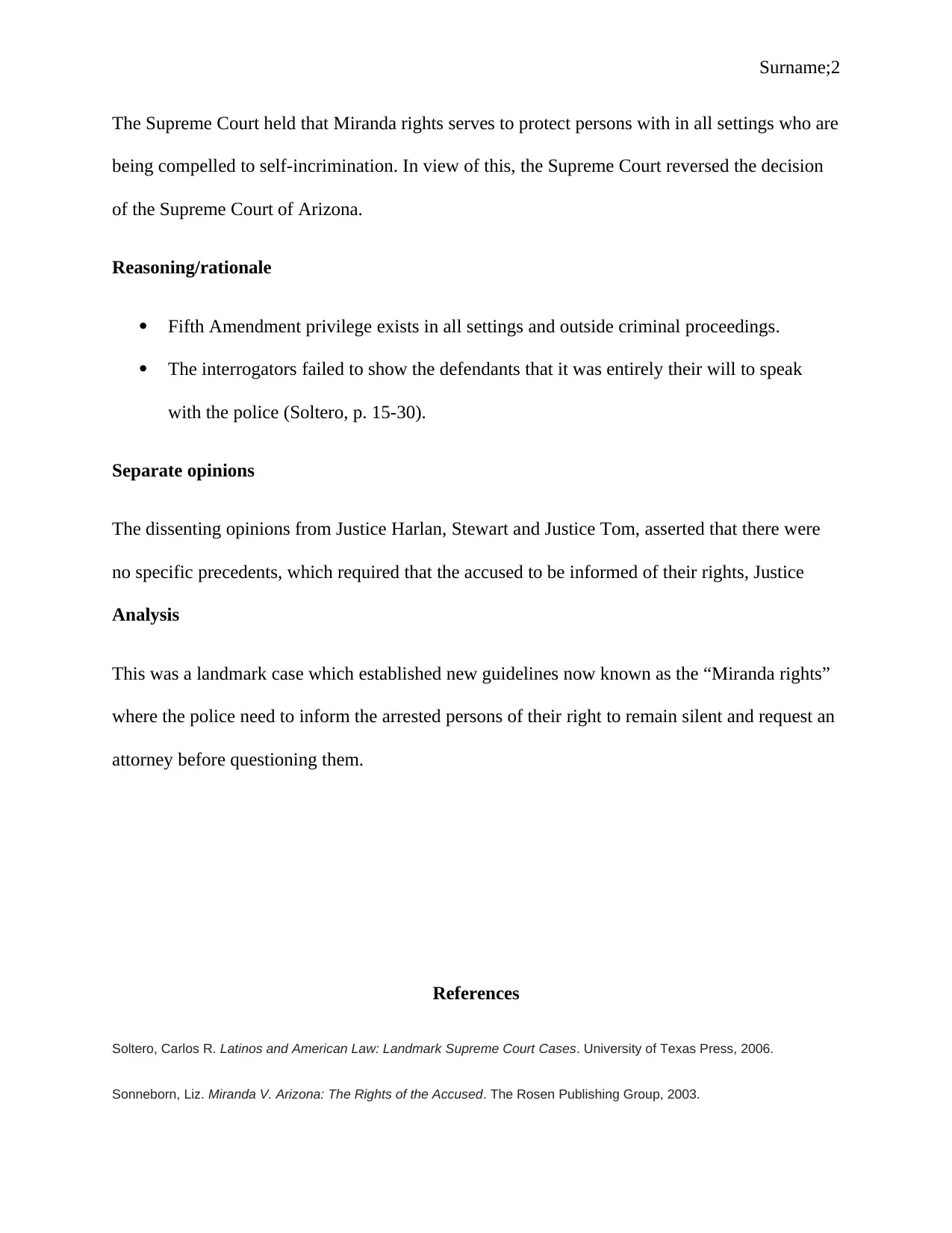Miranda v. Arizona: Examining Legal Implications and Outcomes
VerifiedAdded on 2021/04/24
|3
|394
|357
Case Study
AI Summary
This case study provides a comprehensive analysis of Miranda v. Arizona, a landmark Supreme Court case. The study examines the facts of the case, the legal issues involved, and the court's decision, focusing on the Fifth Amendment and the rights of the accused during custodial interrogations. It explores the reasoning behind the court's ruling and its impact on law enforcement procedures, including the establishment of Miranda rights. The study references legal precedents and dissenting opinions, offering a detailed understanding of the case's significance in American legal history. The analysis also covers the implications of the ruling and its continued relevance in contemporary legal settings. The document includes citations of relevant sources, such as Soltero and Sonneborn, to support the analysis. This case study is intended to provide a clear understanding of the legal principles and implications of Miranda v. Arizona, a key case in constitutional law.
1 out of 3










![[object Object]](/_next/static/media/star-bottom.7253800d.svg)